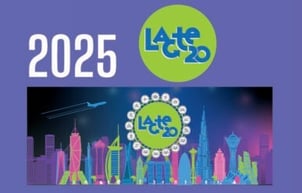Consumers have recently undergone a dramatic shift in expectations. Now more and more consumers expect top digital experiences. Organisations are scrambling to update their offerings and the events industry is no different. But as McKinsey research shows, companies only have a short transition period before we settle into the “new normal.”
So what will online events look like under the “new normal?” In his new book, Reinventing Live, entrepreneur and events expert Marco Giberti predicts that online events will become significantly more sophisticated. He writes that “Post-Covid virtual events and webinars will be unrecognizable. It will be like comparing traditional TV with streaming.”
Soon, planners will no longer be able to get away with unprofessional events that “look like a bad video call.” Along with these shifts in customer expectations, event planners face another challenge that impacts event success: Zoom fatigue.
With the rise of remote working, viewers are spending more and more time in online meetings. This can be exhausting and can impact your audience’s drive to attend virtual events. After a long day at work, who wants to spend more time in front of their laptop?
To adapt to the new normal and overcome Zoom fatigue, event planners need to create engaging virtual experiences that win viewer attention. Drawing on some of the best recent online events, we’ve put together six key steps to improving your online events. Let’s dive in.
1. Boost your broadcast quality
Improving your broadcast quality is the most important step to creating more professional events. This can be solved by increasing your equipment budget. Full HD and 4K cameras, for example, will help you provide crisp viewing experiences. Depending on your location and event type, you can rent equipment, saving you the capital needed to purchase your own gear.
After securing the right gear, hiring technical support is key to ensuring that your equipment is well utilised and that your broadcast is free of technical errors. You can also use a video conferencing platform that allows you to check how good your broadcast is and provides technical support. Interprefy, for instance, has a pre-call testing feature that gives meeting participants a complete preview of their audio and video, their computer settings, and internet speed — this helps participants check their sound and video transmission quality. Rehearsing the event and experimenting with camera and microphone placement can also improve your broadcast.
After mastering these elements, you can try improving your production quality by including more camera angles and incorporating b-roll (secondary footage) into your broadcast. Another way to ensure that your participants have a reliable internet speed is to encourage them to connect to the internet by using an ethernet cable. These cables offer superior broadband connection than Wi-Fi, so they should be utilized by event speakers.
2. Onboard your speakers
While it requires more upfront effort, onboarding your speakers helps you create coordinated events. For example, you can provide participants with speaker kits that include event briefs, timings, and introductory scripts. Along with understanding the event’s structure, speakers need to be trained on how to use your event platform. This will lead to a frictionless experience while enabling your speakers to make full use of your platform’s features.
Another strategy to ensure successful speaking experiences is to share a speaker etiquette checklist that details online speaking best practices such as lighting, webcam angles, and muting microphones when not presenting.
Linked to the previous step on improving broadcasting quality, you should not rule out sending equipment to remote speakers. While this may require some technical onboarding, this will lead to a superior presentation than what webcams and laptop microphones can provide.
3. Onboard your audience
Your audience will attend your event using different devices and with varying levels of digital literacy. To make it easy to participate, event planners need to cater for these discrepancies. This can be done by providing resources that help attendees access and then navigate your event. This can include a frequently asked question section, along with a guide to using audience event tools and features like chat rooms. Interprefy, for example, has a Knowledge Base that include user guides and troubleshooting tips.
While automated reminders can help attendees keep track of the event schedule, something as simple as clear and concise copywriting can give attendees the information they need to enjoy your event.
4. Craft engaging presentations and event experiences
To create engaging event experiences, you need to look beyond PowerPoint presentations. Empower your speakers with stylish presentation templates that include multimedia assets. To maintain high energy levels, consider hiring an emcee to introduce talks, speakers and to highlight why each topic is valuable to the audience. You can also source music from websites like Jamendo and Bensound to fill a similar role and to engage audiences in session breaks.
Depending on how feature-rich your event platform is, you can use tools to drive online event engagement. Online polls, quizzes and breakout chat rooms, for example, are valuable in breaking through Zoom fatigue.
5. Create a multilingual conversation people actually understand
For event audiences, few experiences are as frustrating as not understanding the message clearly. With simultaneous interpreting solutions, messages reach a wider audience but interpretation can get messy if interpreters don’t have the right tools to do their job.
Event planners can avoid this and improve the professionalism of their events by investing in a professional remote simultaneous interpretation solution. These tools are specifically designed for interpreters and include features that allow you to efficiently brief interpreters. These solutions simplify interpretation by providing one easy to use platform for all interpretation needs. This eliminates logistical hurdles, freeing up interpreters to focus solely on providing high-calibre interpretation while attendees interact in their preferred language. At Interprefy, for instance, we’ve developed an online interpretation solution that’s been used for over 30,000 virtual and hybrid events.
6. Enable real-time captioning in different languages
While it is great to have your content in different languages, having it also in written form in real-time in those languages adds to the quality of your event. Real-time captioning allows attendees who cannot hear clearly —either because of hearing impairment or because they are in a location where the audio cannot be heard— to follow your event content.
Improve your online events
From improving broadcast quality to onboarding speakers and audience members, we’ve
shared how event organisers can meet rising expectations and win audience attention.
For more tips on improving your online event, check out our 2021 guide to remote and hybrid event planning. In it, we unpack how to best use online event tools like Zoom, Microsoft Teams and ON24, along with tips on boosting attendance through online marketing. Download it for free by following the link below.


-min-1.png?width=1040&height=800&name=Blog%20Header%20(3)-min-1.png)


 More download links
More download links



